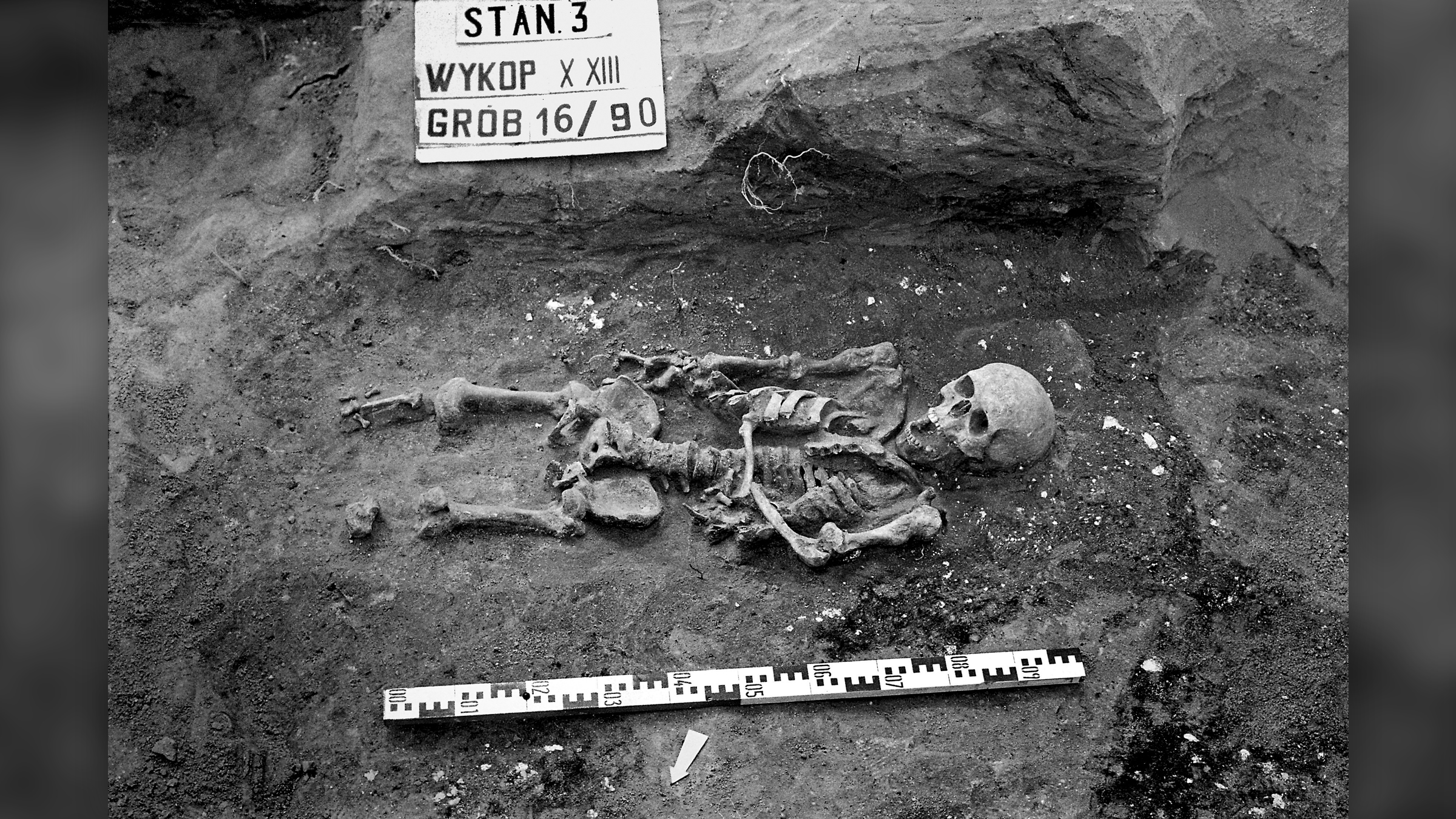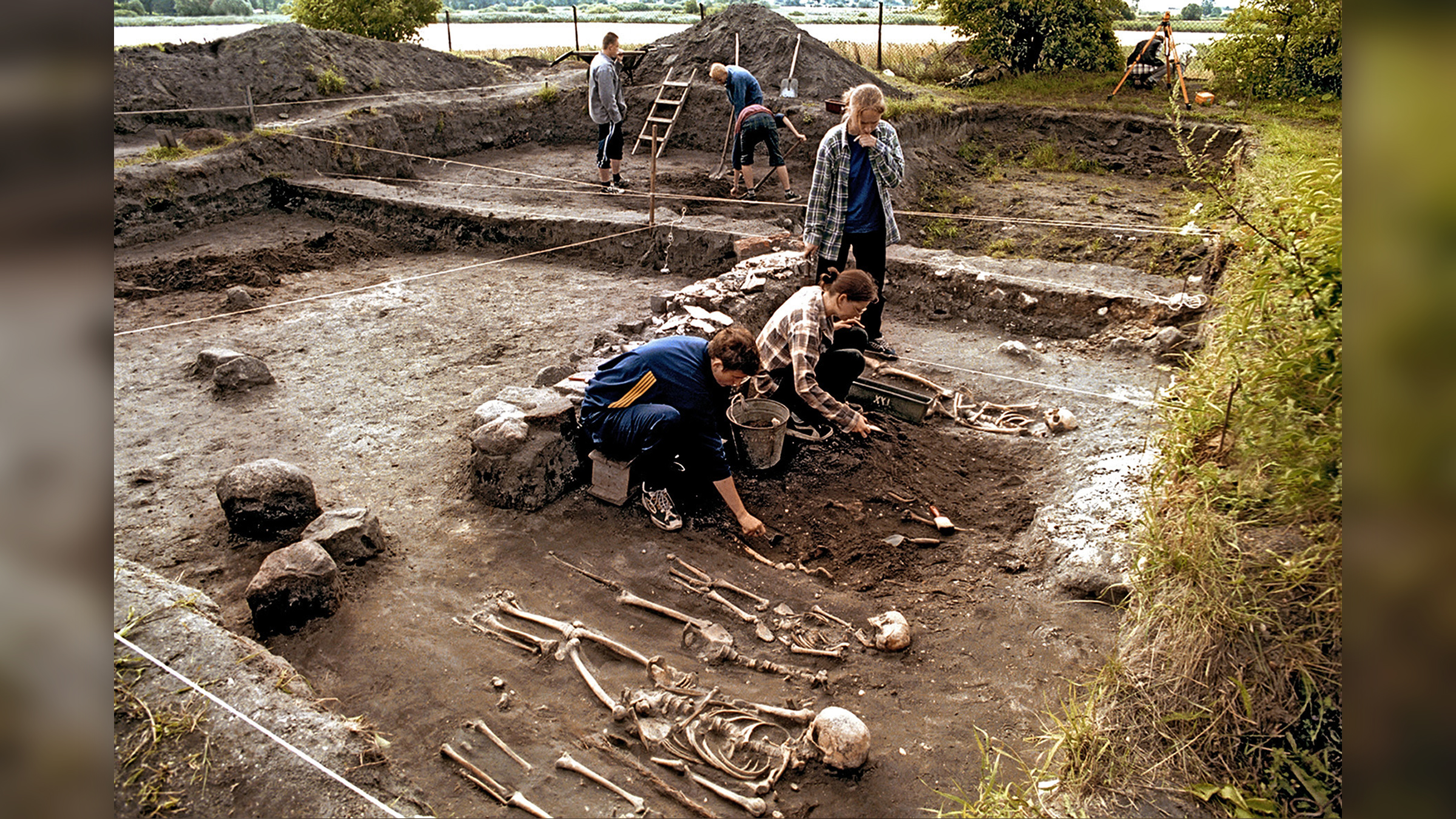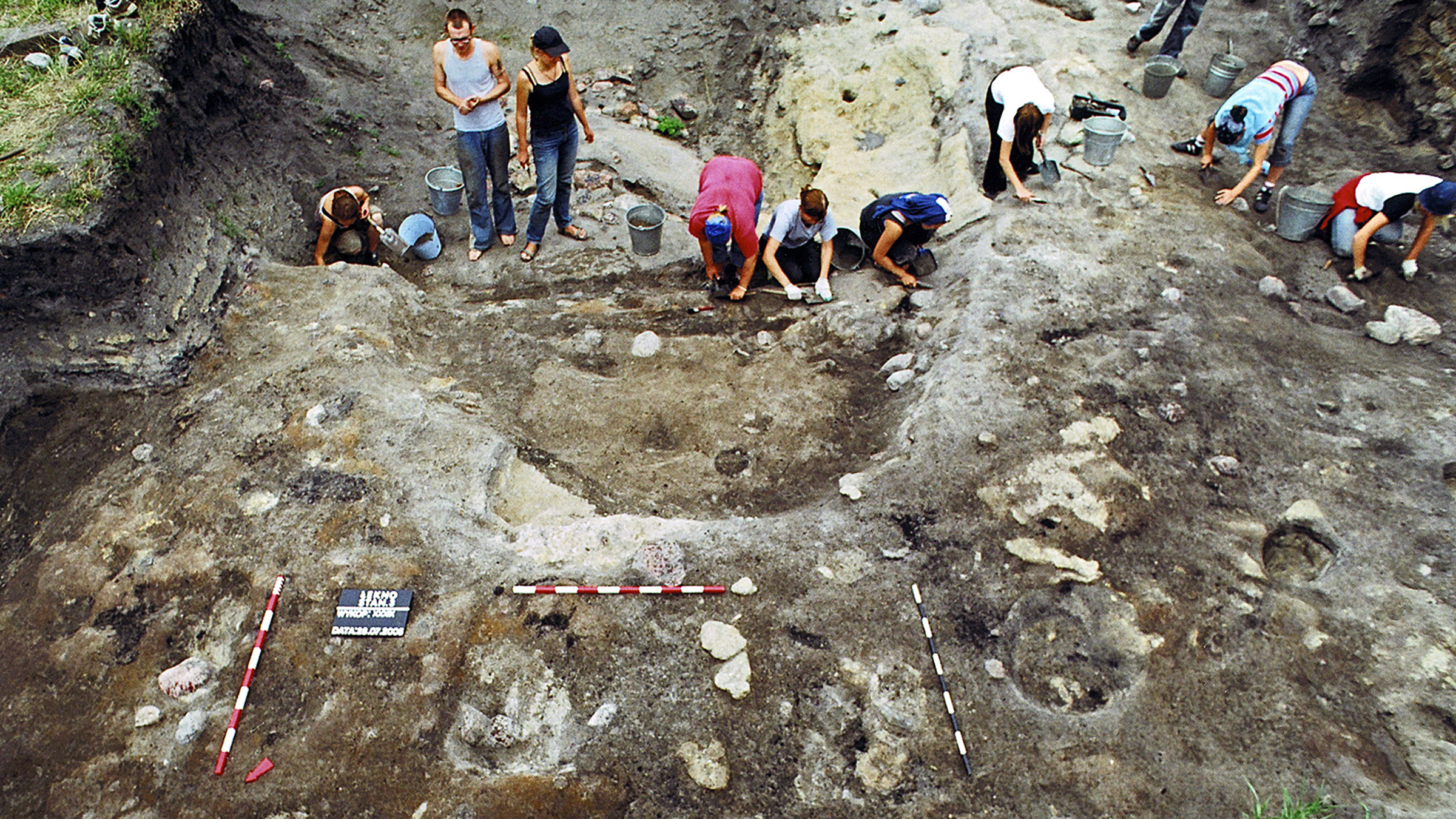Medieval man buried in Poland had two kinds of dwarfism
Archaeologists in Poland excavating a cemetery by a monastery have discovered the remains of a medieval man who had two different forms of dwarfism.

On the grounds of a medieval monastery in Poland, archaeologists have discovered the skeletal remains of a man with two forms of dwarfism, a rare condition that has never been seen before in an ancient skeleton.
The cemetery is located in the small village of Łekno, in west central Poland. Today, Łekno has just a few hundred inhabitants, but in the ninth to 11th centuries, it was a fortified town with a small, domed church near the center. In the 12th century, Cistercians — people who were part of a Catholic religious order of monks and nuns — established a monastery in the town. Around 1450, the cemetery was established, and both monks and local lay people were buried there until the 16th century.
When archaeologists excavated the monastic cemetery in 1990, they found more than 400 burials, including a male individual labeled Ł3/66/90. Carbon dating of the skeleton suggested that the man lived in the ninth to 11th centuries. But "the fact that the grave was located on a wall of the stronghold is puzzling," bioarchaeologist Magdalena Matczak told Live Science in an email. "Such burials were not practiced in medieval Poland."
Upon examining the skeleton in depth recently, Matczak and her colleagues made another intriguing discovery: The man had multiple skeletal dysplasias, which are inherited conditions that can affect the development and shape of bones, cartilage, muscles, tendons and ligaments. Most notably, the man likely had two different forms of dwarfism.
Related: 12 bizarre medieval trends

By generating 3D models, the researchers could focus their investigation on the abnormal shape of several bones. A disproportionate skull, narrow channels for the spinal cord, short ribs and flaring hip bones were among the findings that suggested achondroplasia, a condition in which a person has very short arms and legs, an average-size torso and a larger-than-average head.
In addition, based on the man's turned-out elbows and high, arched dental palate, Matczak and her team determined that the man had a rare condition called Léri-Weill dyschondrosteosis (LWD).
Sign up for the Live Science daily newsletter now
Get the world’s most fascinating discoveries delivered straight to your inbox.
"While achondroplasia has been the most commonly found dysplasia in the archaeological record, only a few cases of LWD have been diagnosed," the researchers wrote in the study, published in the International Journal of Osteoarchaeology in August. Individual Ł3/66/90 is "the first case of achondroplasia and LWD from the medieval period in Central Europe," they noted.

Francesco Galassi, a paleopathologist at Flinders University in Australia who was not involved with the study, told Live Science in an email that "these two conditions were known to coexist in contemporary patients, but no ancient skeletal evidence for it had been put forward" until Matczak and colleagues' study. Galassi said he suspects it would be useful to have "more data on the complexity of these apparently overlapping dysplasias," and suggested that paleogenetic testing examining two genes — the fibroblast growth factor receptor 3 (FGFR3) gene and the short stature homeobox (SHOX) gene — could clarify some of the research team's findings.
Matczak and colleagues' current plan is to better understand the life and death of the medieval man. "He was buried without any grave goods, but in a typical grave, indicating his proper commemoration after his death," Matczak said. "Depending on whether the man was a layman or a monk, his life could have varied greatly according to his genetic condition. The monastery was a place of greater inclusiveness for people physically different from the secular world, with its greater physical demands in fulfilling the role of husband and father."
The researchers are investigating the man's diet using carbon and nitrogen isotope analysis, the results of which could also help the team check their estimate of when the man lived. Due to a phenomenon called the marine reservoir effect, a diet high in seafood can throw off the estimates obtained by carbon dating, sometimes by hundreds of years.
"It is possible that the man lived later and was associated with the Cistercians who built the church on the remains of the stronghold and its walls," Matczak said. "The coming months will bring answers to these intriguing questions."

Kristina Killgrove is a staff writer at Live Science with a focus on archaeology and paleoanthropology news. Her articles have also appeared in venues such as Forbes, Smithsonian, and Mental Floss. Killgrove holds postgraduate degrees in anthropology and classical archaeology and was formerly a university professor and researcher. She has received awards from the Society for American Archaeology and the American Anthropological Association for her science writing.









